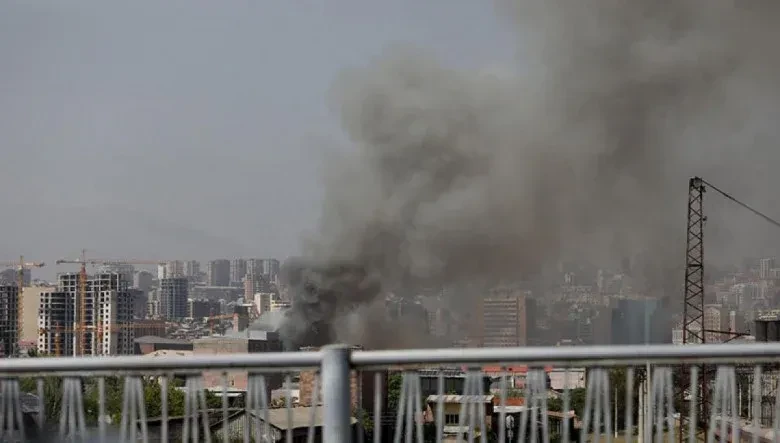"Fact" daily writes:
Armenia is facing a serious ecological crisis in a number of directions, the consequences of which are not only visible on the atmosphere, soil, water, flora and fauna, but also deeply threaten people's health, social stability and quality of life.
Environmental pollution in Armenia is a multifaceted phenomenon. Armenian environmentalists often focus on mining, but statistics and studies show that there are much more serious problems that threaten people's health.
Moreover, there are studies that air pollution in the capital is much higher than in mining areas. More than a third of the country's population is concentrated here, and the city's infrastructure is unable to adapt to the load of such a crowded environment.
The ever-increasing number of cars, road congestion and the sharp reduction of green spaces have created such conditions that air pollution has become a "normal" phenomenon. Yerevan is almost always included in the list of cities with a high dust atmosphere. Carbon monoxide, nitrogen oxides and other toxic substances emitted by cars combine with construction dust and industrial emissions to form a thick haze that can often be seen above the city. This polluted air is then deposited by rainfall onto the soil and watercourses, deepening the overall cycle of ecological pollution.
The construction sector, which has developed rapidly in Yerevan in recent years, has become another serious threat. Construction works carried out in almost every district of the city often do not comply with safety and environmental norms. Construction dust spreads over large areas, noise exceeds the permissible level, and the unlimited traffic of trucks not only damages the asphalt, but also disturbs the rest of the residents.
One of the most urgent and painful problems of Yerevan remains the garbage collection and waste management system. Despite the fact that various private and community structures operate in the city, garbage collection is done without sorting garbage. Polyethylene, plastic and other non-biodegradable wastes are increasing year by year, which are mercilessly accumulating in municipal landfills.
There are no processing plants or sorting facilities, although for years the authorities have talked about attracting investment, using foreign experience and creating a "green economy". These promises remained at the level of words without practical continuation. As a result, Yerevan's landfills have become centers of ecological disaster.
Not only are they overloaded, they also flare up regularly, producing huge plumes of smoke containing dangerous dioxins, toxic gases and particulates. That smoke spreads in the atmosphere of the city, and the citizens are forced to breathe air that is saturated with invisible but dangerous components. Recently, the fire that broke out in Nubarashen dumping ground became a prominent example of all this. The fire not only revealed the ineffectiveness of the management system, but also showed how vulnerable Yerevan's ecological security is.
The consequences of all this have a profound effect on people's health. The prevalence of respiratory, cardiovascular, allergic and oncological diseases in Yerevan has increased in the last decade, and doctors often state that this is directly related to air pollution, changes in the chemical composition of soil and water. According to experts' calculations, the level of air pollution in Yerevan several times exceeds the permissible limit set by the World Health Organization.
As a result of poor management of garbage and waste, the number of mice, insects and other disease-carrying organisms also increases, increasing the risks of epidemics. This situation requires a systemic response, not a superficial one. The state should not only control, but also promote the formation of a new ecological culture at the urban and rural levels.
It is necessary to introduce a garbage sorting and recycling system, to tighten emission control, to establish clear norms for the preservation of green zones, and to revise the urban planning policy. Only then can we achieve a model where the city, nature and man coexist in harmony. If clear steps are not taken today, tomorrow Armenia may face irreversible consequences, losing its natural wealth, biodiversity and clean environment.
And that awareness should become the basis of new state and public thinking, where nature will no longer be perceived as a resource for use, but as the most profound condition of life.
ARSEN SAHAKYAN


























